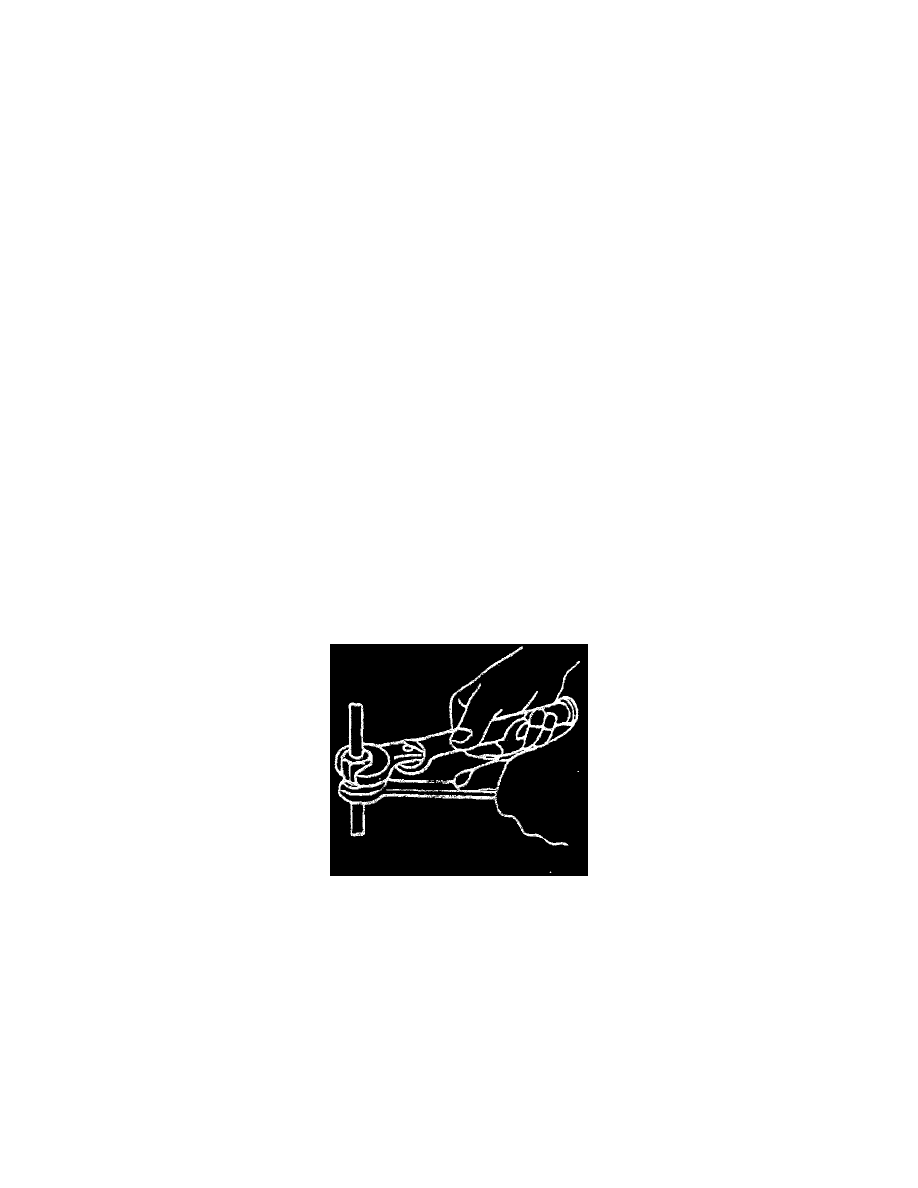S10/T10 Blazer 4WD V6-4.3L VIN W (1997)

High Pressure Safety Valve HVAC: Vehicle Damage Warnings
Maintaining Chemical Stability
The life and efficient operation of the air conditioning system depends upon the chemical stability of the refrigerant system. When foreign materials, such
as dirt, air, or moisture, contaminate the refrigeration system, they change the stability of the Refrigerant-134a and polyalkaline glycol (PAG) refrigerant
oil. They will also affect the pressure-temperature relationship, reduce efficiency, and could cause internal corrosion and abnormal wear of moving parts.
The following general practices should be followed to ensure chemical stability in the system:
1. Whenever it becomes necessary to disconnect a hose connection, wipe away any dirt or oil at or near the connection to eliminate the possibility of
dirt entering the system. Both sides of the connection should be capped, plugged or taped as soon as possible to prevent the entrance of dirt and
moisture. (Remember that all air contains moisture. Air that enters any part of the refrigeration system will carry moisture with it, and the exposed
surfaces will collect the moisture quickly.)
2. Keep tools clean and dry. This includes the Manifold Gage Set and all replacement parts
3. When adding polyalkaline glycol (PAG) refrigerant oil, the container/transfer tube through which the oil will flow should be exceptionally clean
and dry. Refrigerant oil must be as moisture-free as possible.
4. When it is necessary to "open" an air conditioning system to the atmosphere, have everything needed ready so that as little time as possible will be
required to perform the operation. Do not leave the air conditioning system open any longer than necessary.
5. Anytime the air conditioning system has been "opened," it should be properly evacuated before recharging.
Replacing O-Ring Seals
Install new GM-approved service replacement air conditioning O-ring seals whenever a joint or fitting is installed1 except when the O-ring seals are
provided on new replacement components. Unless service replacement Of-ring seals bearing the specified part numbers are used, excessive leakage of
Refrigerant-134a may occur. Refer to the part number for identification.
Air conditioning O-ring seals should be coated with 525 viscosity refrigerant oil just before installation and should be slipped onto the flange tube to
ensure proper locating and sealing. To prevent the possibility of swelling and a reduction in sealing effectiveness, O-ring seals should not be soaked in
refrigerant oil. Before installation, O-ring seals and fittings should be examined to ensure they have not been nicked or deformed. Replace nicked or
deformed parts to prevent refrigerant leakage.
Handling of Refrigerant Lines and Fittings
Using The Two Wrench Method Figure 24
